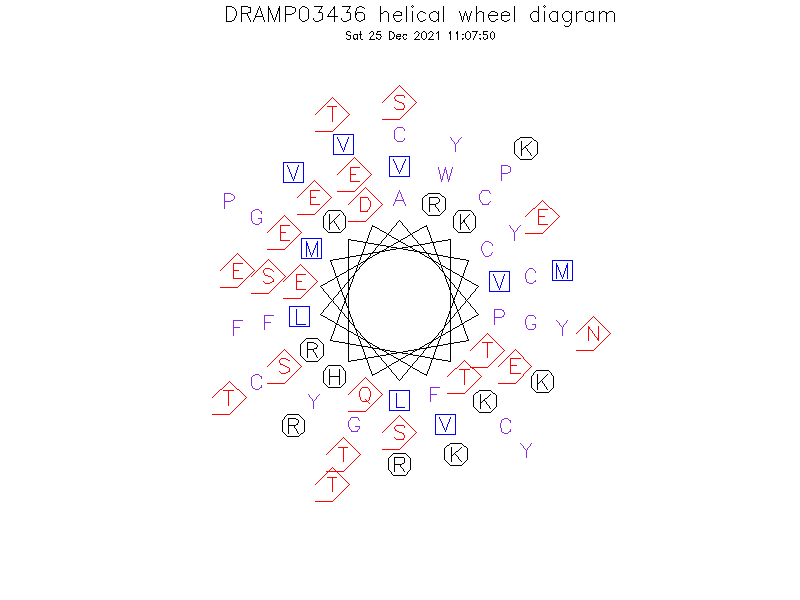General Information
-
DRAMP ID
- DRAMP03436
-
Peptide Name
- Beta-defensin 18 (BD-18, RBD-18; Defensin, beta 18; Rodents, mammals, animals)
-
Source
- Rattus norvegicus (Rat)
-
Family
- Belongs to the beta-defensin family
-
Gene
- Defb18
-
Sequence
- APQMKTRDVLERTHKCFLVGGECKSECSSWEYEYVFCYTGPCCVMREYKRVEKFSNTPKYTT
-
Sequence Length
- 62
-
UniProt Entry
- Q32ZH4
-
Protein Existence
- Homology
Activity Information
-
Biological Activity
- Antimicrobial, Antibacterial
-
Target Organism
- No MICs found in DRAMP database
-
Hemolytic Activity
-
- No hemolysis information or data found in the reference(s) presented in this entry
-
Cytotoxicity
-
- Not included yet
-
Binding Target
- Not found
Structure Information
-
Linear/Cyclic
- Not included yet
-
N-terminal Modification
- Not included yet
-
C-terminal Modification
- Not included yet
-
Nonterminal Modifications and Unusual Amino Acids
- Not included yet
-
Stereochemistry
- Not included yet
-
Structure
- Bridge
-
Structure Description
- Not found
-
Helical Wheel Diagram
-
PDB ID
- None
-
Predicted Structure
- There is no predicted structure for DRAMP03436.
Physicochemical Information
-
Formula
- C322H491N85O96S8
Absent Amino Acids
- I
Common Amino Acids
- ECKT
Mass
- 7345.43
PI
- 8.28
Basic Residues
- 11
Acidic Residues
- 8
Hydrophobic Residues
- 12
Net Charge
- +3
-
Boman Index
- -137.61
Hydrophobicity
- -0.69
Aliphatic Index
- 37.58
Half Life
-
- Mammalian:4.4 hour
- Yeast:>20 hour
- E.coli:>10 hour
Extinction Coefficient Cystines
- 13325
Absorbance 280nm
- 218.44
Polar Residues
- 25
DRAMP03436

Comments Information
Function Has antibacterial activity (By similarity).
Literature Information
- ·Literature 1
-
Title
- Cross-species analysis of the mammalian beta-defensin gene family: presence of syntenic gene clusters and preferential expression in the male reproductive tract.
-
Pubmed ID
- 16033865
-
Reference
- Physiol Genomics. 2005 Sep 21;23(1):5-17.
-
Author
- Patil AA, Cai Y, Sang Y, Blecha F, Zhang G.

